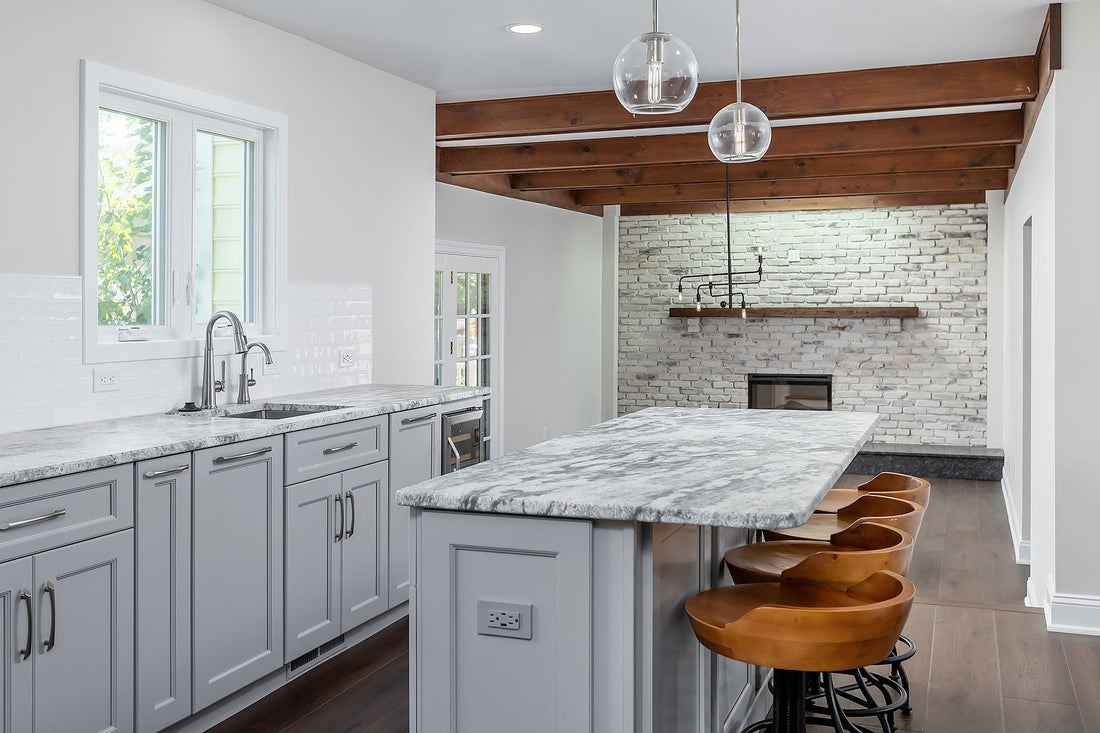Whether you’re building a new home, looking for unique décor options, or exploring ways to build furniture, selecting the right reclaimed wood will make or break the project. One of the best materials for those projects is reclaimed wood. When reclaimed wood is used, the results are certain to garner a great deal of attention.
What is Reclaimed Wood?
Reclaimed wood is any wooden material that’s been salvaged from old buildings, farms, retired ships, and even whiskey or wine barrels for reuse elsewhere. Dealers search for any sources of used wood that others can use to create new objects, remodel existing structures, or construct new buildings. That means there is an amazing variety of reclaimed wood in all lengths, widths, and thicknesses.

Discover the Advantages of Reclaimed Wood
It’s easy to purchase many types of new wood from suppliers, but new wood simply isn’t available in many sizes. Reclaimed wood is available in sizes that can’t be matched with new lumber. In the past, wood was milled or hewed into lumber that was both thick and wide. Trees that size can’t be found anymore, which means today’s new lumber buyers experience limitations that make some projects impossible.
Rare wood species are no longer harvested, but reclaiming lumber makes it possible to enjoy the grain, color, and beauty of those varieties. That’s especially important for restoration projects or when remodeling older properties.
Choosing Wood That’s Ideal for Your Project
Selecting the right reclaimed wood for your project is a personal choice, but there are some basic "rules" to follow. Before purchasing any wood, it’s important to understand your project’s needs and why some types of wood are more appropriate than others. For example, the wood selected for an accent wall might not be appropriate for constructing an exterior door. Some reclaimed wood is better suited to indoor projects, as direct exposure to the weather might not be desirable.

Color is Always Important
Every wood variety has a characteristic color that must be considered when selecting reclaimed wood for your project. Cherry wood, for example, wouldn’t be best option if you’re trying to match oak or maple trim in a home.
Of course, it’s possible to stain a wood to match another variety closely, but the results won’t always be what you expect. Color is only one aspect to consider when choosing reclaimed wood for a project.
Smooth or Rough?
A high percentage of reclaimed wood won’t be smooth. Barn wood, for example, is generally going to be quite rough. Wood used for constructing barns and other farm buildings was rarely planed. Smoothing the wood wasn’t seen as necessary. If your project requires a smooth surface, look for wood reclaimed from interior areas of old buildings that were milled smooth and, as a rule, used for interior applications.
Note that it’s entirely possible to plane older reclaimed lumber to create a smooth surface, but that will eliminate the patina that’s taken countless years to develop. If it’s more important to match a species rather than a surface texture, where the lumber was previously used isn’t as important.

Consider Where the Wood Will Be Used
Another important factor when deciding which reclaimed wood for a project relates directly to where the wood will be used. In areas where humidity levels are high, such as in bathrooms, warping can occur with some woods. The wood selected for use in humid areas may have to deal with constant changes in humidity. Ask a reclaimed wood professional for advice when humidity levels will create issues.
Extremely dry conditions can also create problems. Wood that’s always been in a relatively damp environment may shrink and crack when used in an arid region. If you intend to use any wood in a very dry area, it always pays to ensure the wood is able to deal with hot, dry conditions.
When Durability is a Consideration
Barn wood used to cover a wall isn’t subject to wear. It will probably look much the same years after the installation is completed. However, reclaimed wood that’s used for a floor must be able to take a good deal of abuse without showing wear.
Durability is a benefit of selecting woods like Southern Yellow Pine, oak, maple, and birch for flooring. Those woods tend to be hard and easily take on the challenges when used as flooring. Antique boards may also be very wide, which is a requirement for many construction and remodeling projects.
Availability is Important
Some projects, like fireplace mantles, don’t require a lot of wood. A single shelf is often all that’s necessary to obtain the look a property owner is seeking. That means finding the right reclaimed wood won’t be overly difficult. However, if you are filling the entire ceiling of a large room with hand hewn timbers be covered with wood, it’s important to locate a sufficient quantity.
Suppliers may have access to large quantities of relatively common wood species, but woods like chestnut, walnut, and hickory may prove to be more difficult to locate. Even if a specific variety of reclaimed wood is available in one region, it may be scarce in another area. That means shipping would be required, and that can greatly increase the final costs. It makes sense to work with your design team, contractor, and reclaimed wood experts when determining which type of reclaimed wood should be used for a project.

Start Planning Now to Get the Right Reclaimed Wood
Selecting the right reclaimed wood should take some time. When at all possible, plan ahead. Working with key professionals helps property owners determine the viability of specific projects and makes it easier to source scarce materials. That’s especially true when dealing with reclaimed wood.
If your project will require very wide or thick boards, it may take time to locate the wood needed. Matching existing wood is also an issue for owners remodeling an older home. It’s always best to use wood that closely matches existing wood during a project.
New home builders have a little more leeway, but they still need to consider which woods will be ideal for their floors, trim, fireplace mantels, or décor pieces. Discuss your ideas with a designer or your contractor and, when that’s been done, get in touch with a reclaimed wood expert. The antique and reclaimed wood experts are poised to find the wood you need.

Written by Jake Park
Jake is the founder of Modern Timber Craft and is a seasoned reclaimed woodworking enthusiast with over 20 years experience.


